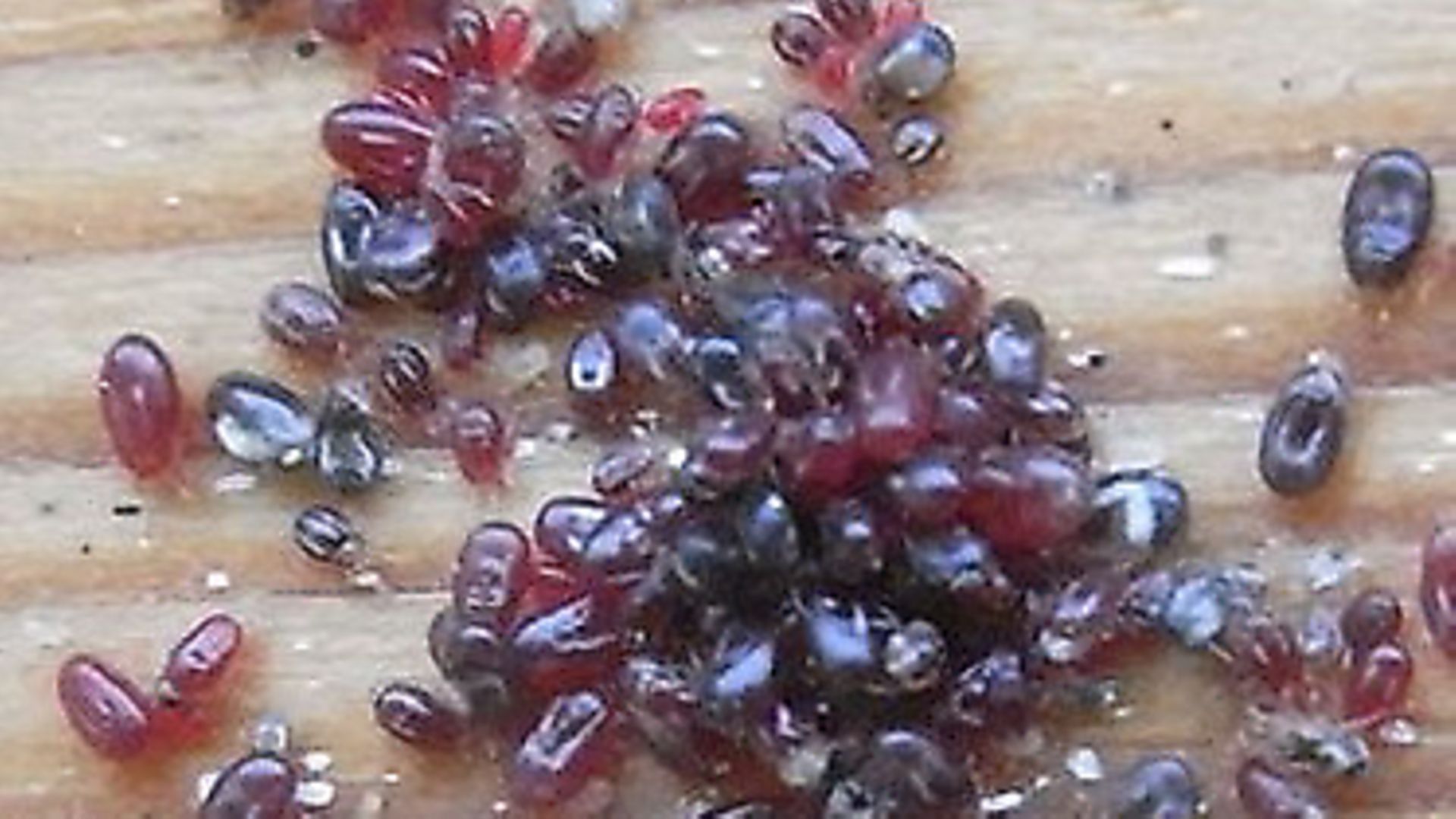Tony Slinger, manager of Carrs Billington at Bakewell, provides top tips for controlling red mite in Poultry.

Promotional feature
Dermanyssus gallinae, better known as the Red Mite, is a blood feeder of up to 1mm in size that feeds on poultry and is of particular concern to the domestic chicken keeper. Found in cracks and crevices of the coop during the day, at night it crawls onto the bird and feeds by sucking blood from its host, turning from grey to red as it does so. After feeding, they return to crevices, away from daylight, to mate and lay eggs. The life cycle can be complete within seven days, with populations growing rapidly, causing anaemia in badly effected birds. Mites can survive for up to six months without feeding.
Symptoms of red mite on your chickens are usually reduced egg production, comb and wattles can become pale and small red spots, or blood spots appear on eggs. You may find that birds become depressed, scratch, or develop bare patches of skin.
To reduce numbers of red mite (it is very hard to eradicate) the starting point should be a thorough cleaning of the chicken coop. Remove all waste and bedding and any removable parts of the chicken house. The housing will now need a very good clean, and a hosepipe or pressure washer is often the best way of clearing out the mites from all the crevices within the coop. Don’t forget to do the roof and the nest boxes. Now leave the coop to dry out before placing any parts removed back in. If you are unable to get a hosepipe near the coop, you can use a solution specifically designed for the task, such as Total Mite Kill liquid from Nettex, which has the added bonus of disinfecting the housing, killing bacteria, yeasts and fungi.
Once the housing is dry, I have found the best system is to use a powdered product based on Diatomaceous Earth. DE, as it is often referred as, is an amazing product based on naturally occurring fossilized remains of tiny plants called Diatoms that are found in the sea. The Diatomaceous Earth product should be thrown into the cracks and crevices, on perches and all over the coop. When any remaining mites come out, they become covered in the powder. DE is abrasive breaks down the waxy layer on the mite, and causes them to dehydrate and die. DE is also very safe and suitable for organic systems.
The next task is to clear the mites from the chickens. The easiest way to apply DE direct to the birds is to hold them by their feet and hang them upside down. Don’t be distressed, this will cause no discomfort to the bird. Your chicken will flap once or twice, then hang quietly, with its wings spread out, allowing you to add the powder to the breast, under the wings and on the leg feathers.
The last stage, which is often forgotten, is to add some powder to the dust bath. One of the reasons chickens have dust baths is to dislodge mites from under the feathers. The mites will reside in the dust, ready to jump on to the next chicken that uses the bath. On a dry day, add a generous helping of DE to the area your chickens use and they will spread the DE throughout the dirt.
Regular use of a DE based product on a quarterly basis should be sufficient to control red mite on your chickens and within your housing. Total Mite Kill powder and liquid from Nettex are available from Carrs Billington, along with Creosote substitutes for keeping your housing in top condition, and a wide range of poultry drinkers and feeders. Drop in to the store to discuss feeding, vitamin supplements and general animal health with the qualified staff.
For more information on animal health and nutrition, contact Carrs Billington on 01629 814126 or visit the store at:
Unit 4-6 Kingfisher Building
Riverside Business Park
Buxton Road
Bakewell
DE45 1GS
Image(s) provided by:
Archant







